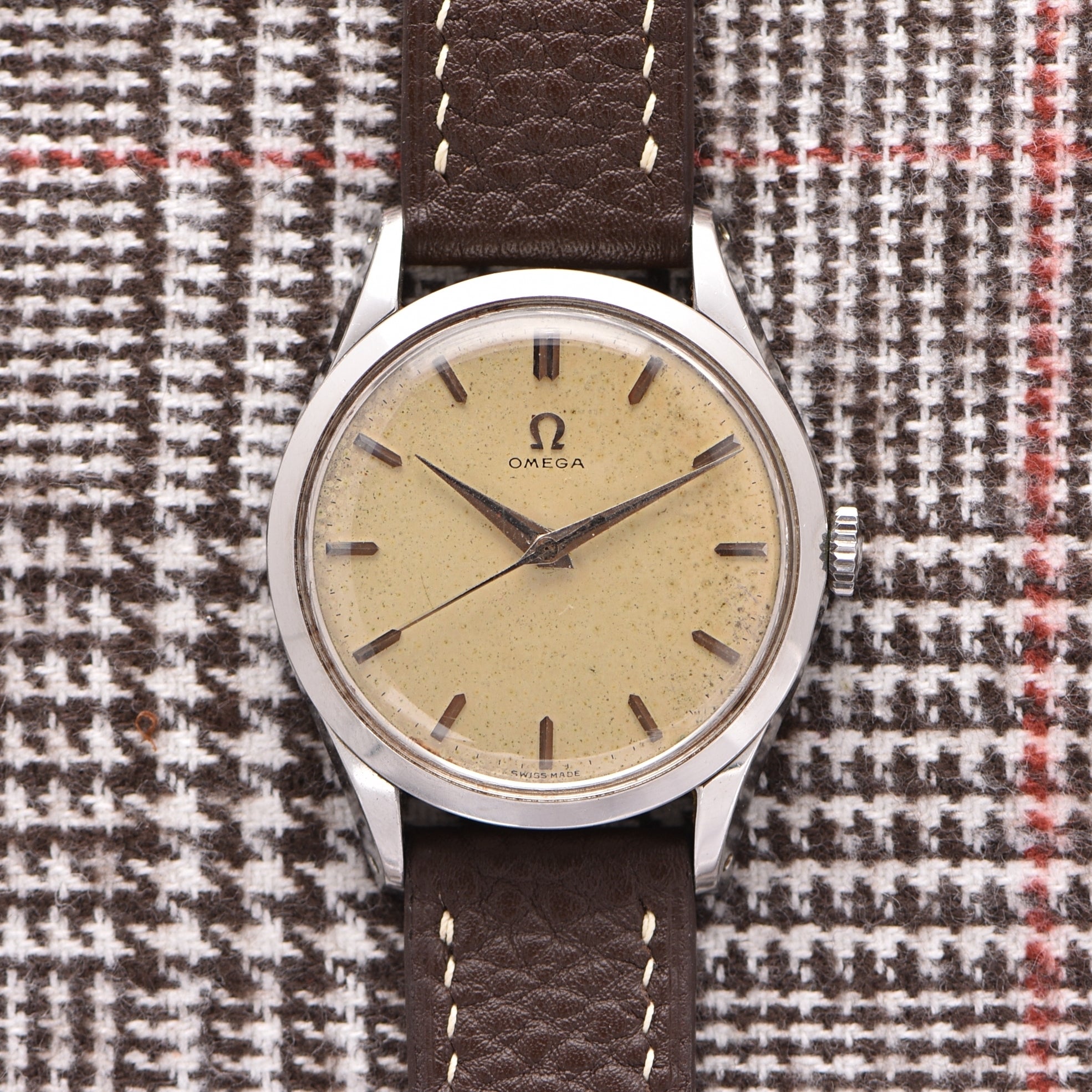

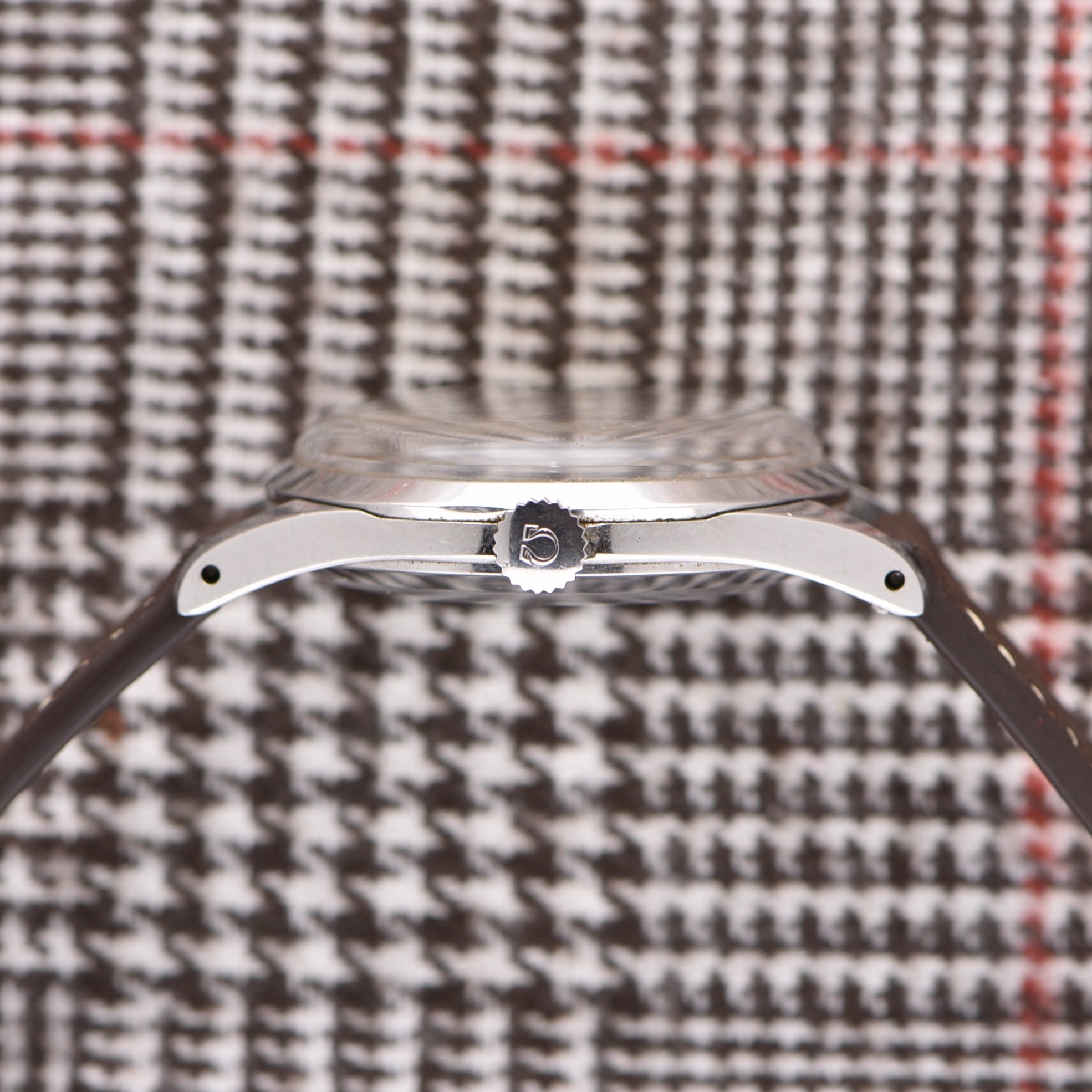
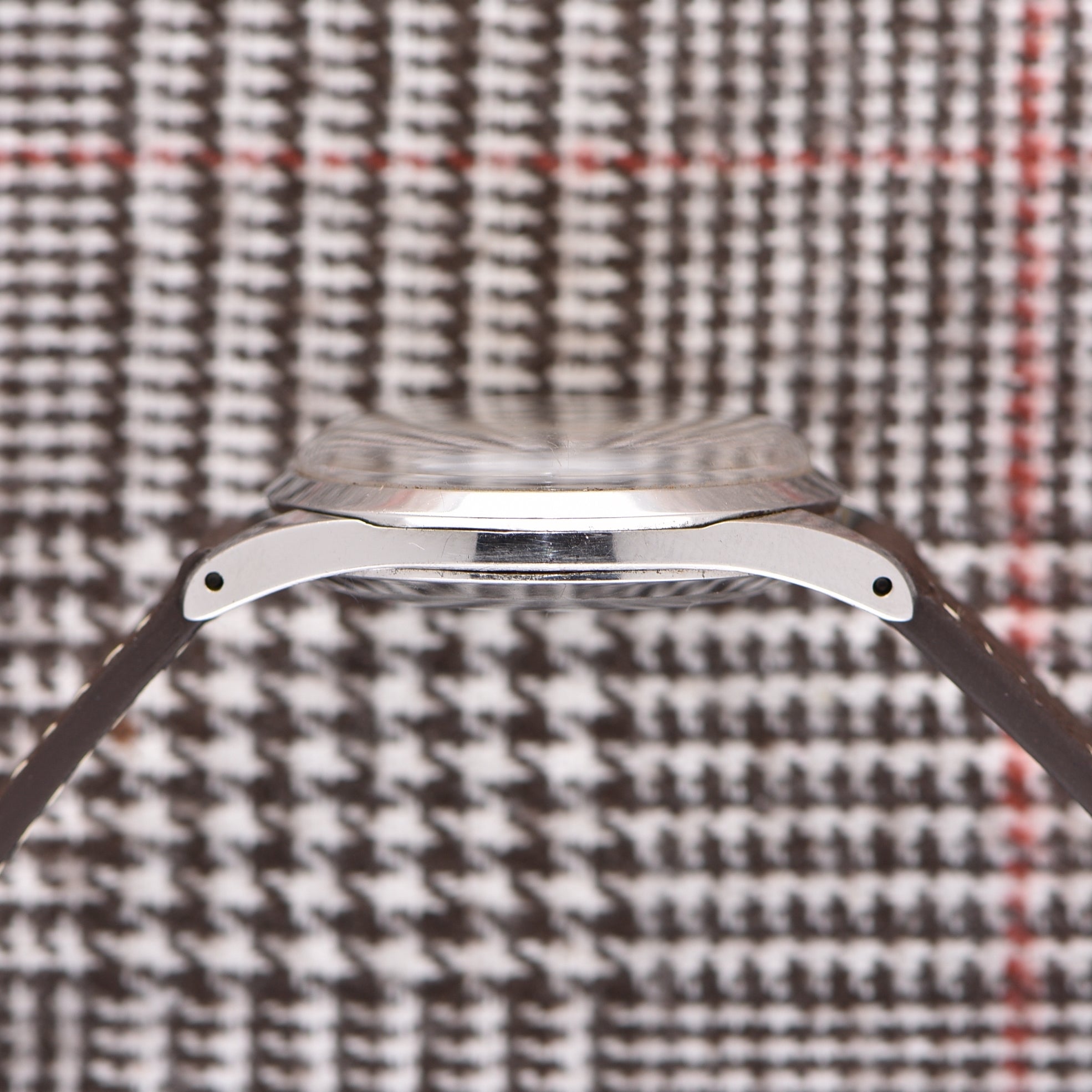
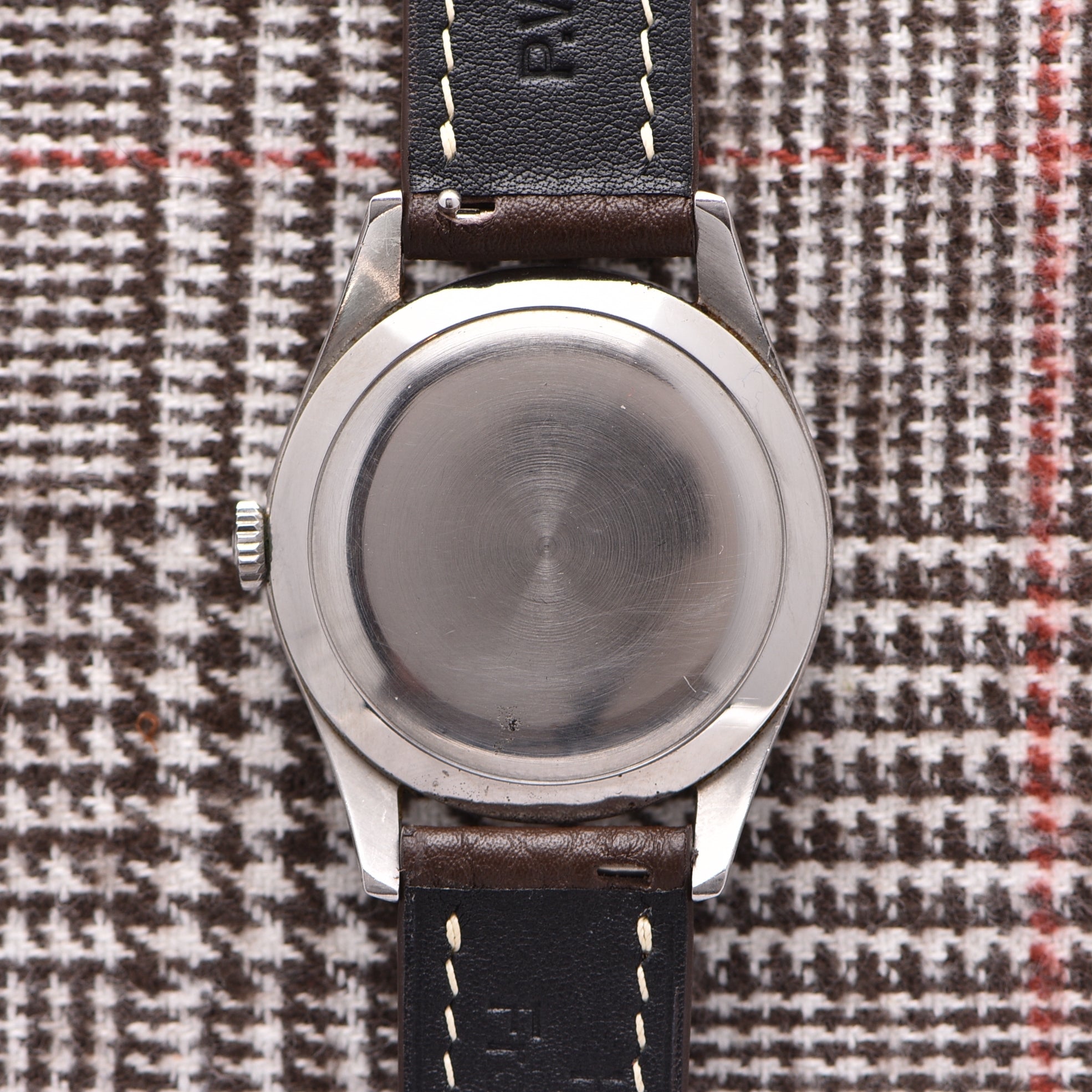
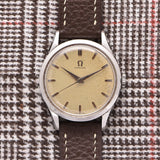
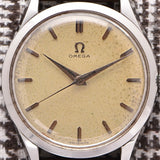

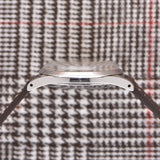

1954 Omega Calatrava Hour Markers - First Edition
- 2760-9 SC
- Watch Only
- Wire Price $500
- Specifications
- The Story
- The Brand
Year: 1954
Model: 2760
Case Diameter: 34mm
Lug to Lug: 40mm
Case: Stainless Steel
Condition: No significant wear as seen
Dial: Silver
Movement: Manual wind
Condition
The dial hace noticable patina. The Case is nice and clean with normal wear. The lugs are nice and even. Housed inside is the caliber 283, which is running great.
The reference 2760-9SC was introduced in 1954, making this one of the first ever produced. They featured six different dial configurations; three had the dauphine hands and baton markers like this. Omega, even after the Seamaster and other models were produced, still made some watches with only the Omega name on the dial. This is a perfect example: a center seconds hand Omega with a dial similar to Patek Philippe from the same era. Many people do not know this, but there was a time in watchmaking when subsecond movements were easier to make than center seconds. That is why you see most Omegas with the seconds hand at 6 o'clock, dating to around the early 60s and earlier. That is why examples like this are always special.
Omega, a Swiss watchmaker founded in 1848, has a rich history of innovation and precision. The company's vision was carried on by its sons Louis-Paul and César, who pioneered full watch production under the brand's roof. In 1894, the company unveiled the world's first mass-produced, interchangeable watch movement, the Omega Calibre, which streamlined production and propelled the brand to international fame.
As the 20th century began, Omega watches became at the forefront of timekeeping technology and revolutionized sports watches with their precision. The Olympic Games provided an ideal stage for Omega to demonstrate its exceptional timekeeping abilities. In 1932, Omega began its role as Official Olympic Timekeeper, starting an enduring partnership spanning over 80 years. With each Games, Omega introduced groundbreaking timekeeping innovations, such as the first photo finish camera at the 1948 London Olympics.
Omega's contributions to spaceflight began in 1962 when the Omega Speedmaster became the first watch worn in space on Mercury-Atlas 6. Its defining moment came in 1969 with the Apollo 11 moon landing, where Buzz Aldrin stepped onto the moon wearing his trusty Omega Speedmaster Moonwatch. The company played an indispensable role in NASA's pioneering '60s space missions, including the Apollo 13 mission, where the Speedmaster timed the engine burn, ensuring the crew's safe descent to Earth.
Omega's cultural impact extends into pop culture through a long-running cinematic partnership with James Bond Movies. Since 1995's GoldenEye, James Bond has sported Omega watches on the silver screen, wearing the Seamaster Diver 300M and the rugged Omega Seamaster Planet Ocean.
Omega remains dedicated to exploring new technological frontiers today, with innovations like the battery-free Pictograms model, wearable tech collaborations, and energy-harnessing movements driving progress and cementing its place in history.
1954 Omega Calatrava Hour Markers - First Edition
Authenticity Guaranteed
All our watches are carefully inspected to insure and guarantee the authenticity.
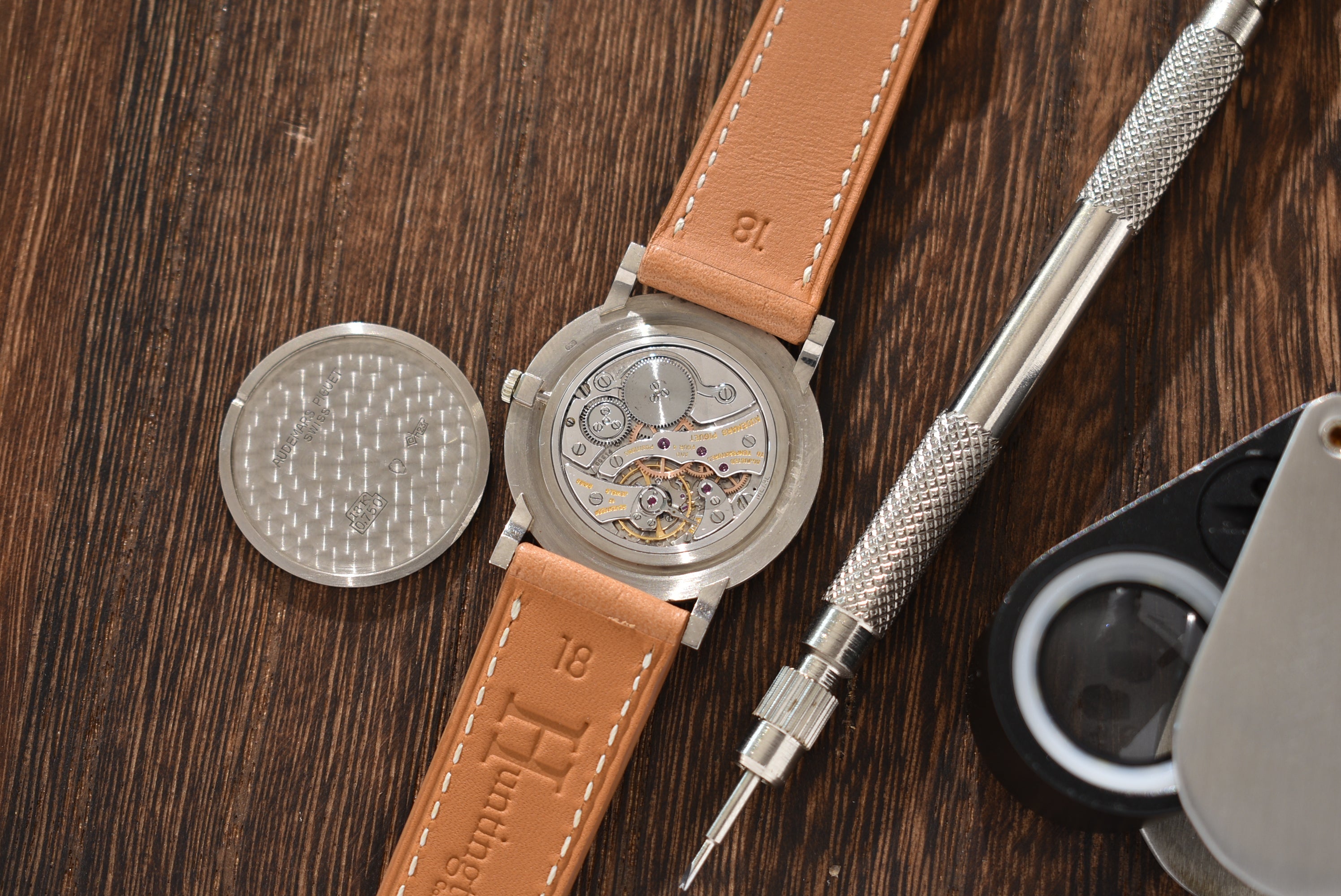
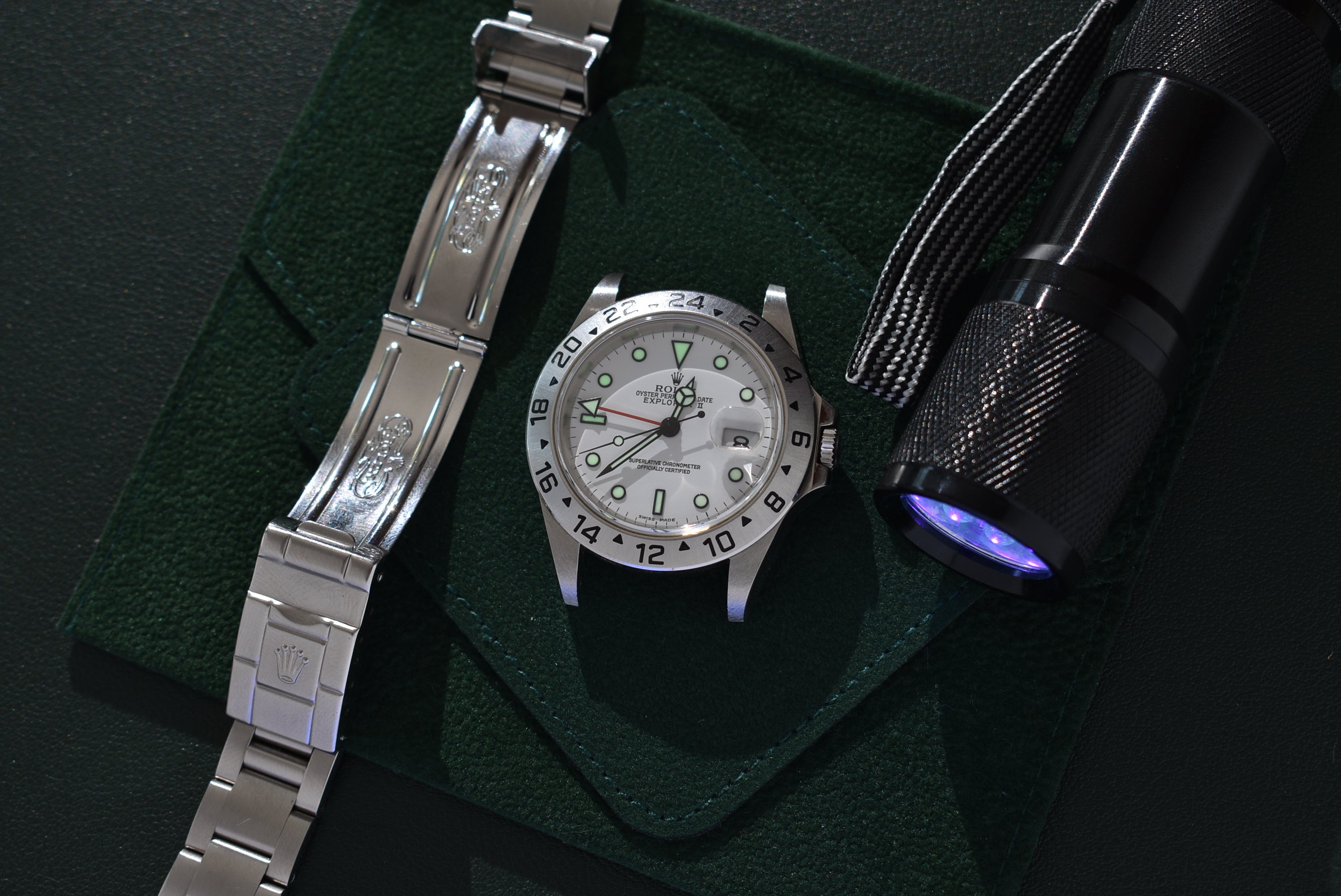
The Details
All our watches are scrutinized during inspection to make sure our descriptions are as accurate as possible.
- Recently viewed
Cart
No more products available for purchase
Your Cart is Empty
Pair with
- 2760-9 SC
- Watch Only
- Wire Price $500
- Specifications
- The Story
- The Brand
Year: 1954
Model: 2760
Case Diameter: 34mm
Lug to Lug: 40mm
Case: Stainless Steel
Condition: No significant wear as seen
Dial: Silver
Movement: Manual wind
Condition
The dial hace noticable patina. The Case is nice and clean with normal wear. The lugs are nice and even. Housed inside is the caliber 283, which is running great.
The reference 2760-9SC was introduced in 1954, making this one of the first ever produced. They featured six different dial configurations; three had the dauphine hands and baton markers like this. Omega, even after the Seamaster and other models were produced, still made some watches with only the Omega name on the dial. This is a perfect example: a center seconds hand Omega with a dial similar to Patek Philippe from the same era. Many people do not know this, but there was a time in watchmaking when subsecond movements were easier to make than center seconds. That is why you see most Omegas with the seconds hand at 6 o'clock, dating to around the early 60s and earlier. That is why examples like this are always special.
Omega, a Swiss watchmaker founded in 1848, has a rich history of innovation and precision. The company's vision was carried on by its sons Louis-Paul and César, who pioneered full watch production under the brand's roof. In 1894, the company unveiled the world's first mass-produced, interchangeable watch movement, the Omega Calibre, which streamlined production and propelled the brand to international fame.
As the 20th century began, Omega watches became at the forefront of timekeeping technology and revolutionized sports watches with their precision. The Olympic Games provided an ideal stage for Omega to demonstrate its exceptional timekeeping abilities. In 1932, Omega began its role as Official Olympic Timekeeper, starting an enduring partnership spanning over 80 years. With each Games, Omega introduced groundbreaking timekeeping innovations, such as the first photo finish camera at the 1948 London Olympics.
Omega's contributions to spaceflight began in 1962 when the Omega Speedmaster became the first watch worn in space on Mercury-Atlas 6. Its defining moment came in 1969 with the Apollo 11 moon landing, where Buzz Aldrin stepped onto the moon wearing his trusty Omega Speedmaster Moonwatch. The company played an indispensable role in NASA's pioneering '60s space missions, including the Apollo 13 mission, where the Speedmaster timed the engine burn, ensuring the crew's safe descent to Earth.
Omega's cultural impact extends into pop culture through a long-running cinematic partnership with James Bond Movies. Since 1995's GoldenEye, James Bond has sported Omega watches on the silver screen, wearing the Seamaster Diver 300M and the rugged Omega Seamaster Planet Ocean.
Omega remains dedicated to exploring new technological frontiers today, with innovations like the battery-free Pictograms model, wearable tech collaborations, and energy-harnessing movements driving progress and cementing its place in history.
